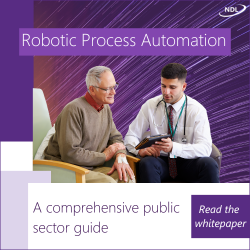
The system design of digital tools to be used by nurses and midwives should be intuitive, provide for the re-use of data and easy to search, according to NHS England.
It has outlined the principles as part of a wider guidance document, published last week, on best practice in documentation in the sector.
The guidance says it is aimed at helping organisations implement record systems and polices that help nurses to produce good document to support and evidence decision making and care – while also minimising the time spent on producing the records.
The section on digital tools and usability emphasises the need for these to support good documentation with a series of requirements.
They include intuitive data entry, the ability for data to be entered once and re-used, support in searching the record, traceability to the person who set up the document and the use of clinical decision support tools. This should come with the capacity to disable tools such as ‘copy and paste’ functions that could pose a risk to quality and safety.
Standardisation and structure
Good practice in the creation of data is an important element, with the use of standardised terminology, structured data formats and the use of relevant national standards including those set out by the Professional Records Standards Body.
Other requirements include support for nurses to document and share documentations, support for data extraction from the care record and use of business intelligence tools, and the ability to leverage patient data to understand their preferences and needs.
There is also a need to enable nurses and midwives to harness technology such as AI, predictive analytics and voice recognition.
On a broader front, the guidance outlines approaches to the management of nursing documentation, a person centred approach to care, the sharing of information to support the continuity of care and how to audit record keeping.
“The digitisation of the NHS has made visible the volume of documentation that nurses are asked to produce, and the variation that exists, even within the same organisation,” the guidance says.
“The challenges of moving from traditional paper-based systems to digital include both the ‘what’ and ‘how’ to digitise documentation, as well as the cultural issues associated with reducing unwarranted variation and changing clinical practice.
“With a growing number of organisations seeking to digitise nursing and midwifery documentation, addressing these issues, as a collective, is critical if we are to ensure practice is effectively supported by digital technology, and to be able to build on this to transform the way we work together, across organisational boundaries, to deliver seamless and coordinated care.”





